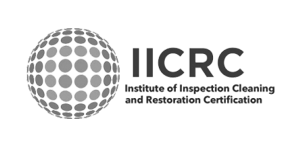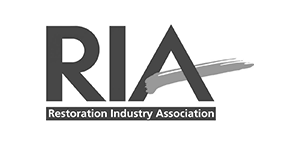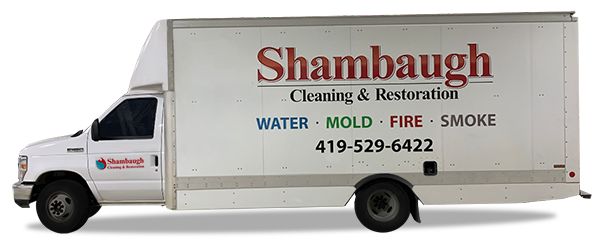When flames destroy your home, you might wonder if it can be fixed. This question worries many homeowners. They are unsure about how to make their homes whole again.
Fire damage restoration is a detailed process. It’s not just about fixing the damage. It’s about making sure the house is safe and strong again. The fire’s intensity, the type of damage, and quick actions all play a big role in fixing a house after a fire.
Key Takeaways
- Fire damage restoration is a specialized process that evaluates structural integrity and the extent of fire damage.
- Classifying fire damage helps in understanding the specific restoration needs: Class A (solids like wood), Class B (liquids), Class C (gases), Class D (metals), Class E (electrical), and Class F (cooking oils).
- Immediate actions post-fire, such as securing the property and contacting insurance, are essential.
- The cost of repairing a house after fire damage varies widely based on the severity, from minor fixes around $3,000 to extensive structural repairs exceeding $50,000.
- Enlisting help from professionals, including structural engineers and restoration specialists, is critical for safe and effective fire damage restoration.
Understanding Fire Damage
Fire damage can take many forms, each affecting a property in its own way. The damage’s extent and type dictate the restoration approach and costs. These costs can vary widely, from $3,000 to $50,000.
Types of Fire Damage
There are six main types of fire damage, each with its own cleaning needs. These types are:
- Class A: This involves common combustibles like wood and paper. It leaves dry, ashy residues that can damage structures.
- Class B: This type involves flammable liquids and gases. It leaves oily residues that need special cleaning agents.
- Class C: This type involves gases and can cause explosive damage. It can affect up to 75% of a property in severe cases.
- Class D: This type involves combustible metals. It requires specific extinguishing agents to prevent further chemical reactions.
- Class E: This type involves electrical fires. It complicates restoration due to damage to the electrical system.
- Class F: This type involves cooking oils and fats. It leaves thick, hard-to-clean residues and lingering odors.
Impact on Structural Integrity
Fires can warp and crack materials like wood and drywall. This can weaken a building’s structure. Up to 50% of fire-damaged buildings may have significant structural issues.
It’s vital to have a licensed inspector assess the damage quickly. This ensures the property is safe for restoration work.
Primary vs. Secondary Fire Damage
It’s important to know the difference between primary and secondary fire damage. Primary damage comes directly from the flames. Secondary damage includes smoke, soot, and water from firefighting efforts.
Smoke can spread up to 20 feet from the fire source. This can cause extensive damage to areas not directly touched by flames. Water damage, affecting about 30% of fire incidents, adds to the complexity of restoration.
Understanding these types of damage helps in cleaning and repairing fire-damaged properties. It informs insurance claims and ensures a thorough restoration process.
Immediate Steps After a Fire
After a fire, quick and smart actions are key to reduce damage and start recovery. Here’s a guide for homeowners on what to do first.
Contacting Your Insurance Company
Contacting your insurance company is a top priority. Tell them about the fire right away to start the claims process. Knowing what your policy covers helps with cleaning, fixing, and replacing things. Keep all fire-related expense receipts for insurance claims and taxes.
Securing Your Property
It’s important to secure your property after a fire to avoid more damage. You might need to board up windows and cover roofs to protect against weather. Securing your property also helps prevent theft or vandalism during this sensitive time.
Hiring Professionals
Getting help from fire restoration experts is essential. Companies like Shambaugh Restoration have over 40 years of experience. They will check the damage, clean up dangerous materials, and start the repair work. Fire cleanup includes removing charred items and soot. It’s also important to use experts to avoid health risks from fire residues.
Can a fire-damaged house be repaired?
Repairing a house damaged by fire depends on how bad the damage is. Experts first check the damage to see what needs fixing. They look at both small scorch marks and big fire damage.
Most fires are small and don’t hurt the house’s structure. About 50% of fires are small enough not to need big repairs. But, 30-40% of houses with big damage might need to be rebuilt from scratch.
Insurance helps a lot with the costs. It usually covers 80-90% of the repair costs. But, in certain places, homeowners might have to pay some of the costs themselves. This is true for 15-20% of homeowners.
The cost to fix a fire-damaged house varies a lot. Small repairs can cost $2,500 to $25,000. But, big repairs can cost over $100,000. Water and smoke damage can add $3,000 to $17,000 more.
How long it takes to fix a house also varies. Small repairs can take 5 to 14 days. But, big repairs can take weeks or even months. This is because of tasks like fixing plumbing and electricity, which are needed in 70% of big damage cases.
Working together is key to fixing a fire-damaged house. Homeowners, insurance, and repair teams need to work together. About 70% of homeowners also choose to make their homes better during the repair. This can make their homes worth more, by 20% to 30% once fixed.
In summary, fixing a house damaged by fire is possible. It needs the help of experts and careful planning. With the right help, homeowners can make their homes safe and comfortable again.
Conclusion
Fixing a house damaged by fire is a big job with many steps. It’s important to know how bad the damage is. This includes water damage from fighting the fire and smoke smells. With quick action and the right help, fixing a fire-damaged house is often possible.
First, you need to check how bad the damage is. Then, you must protect the house from getting worse. Companies skilled in fire and water damage can help a lot. They clean surfaces well and use special tools to get rid of smoke smells.
Also, you might need to replace things like carpets and furniture that got smoke damage. Using air purifiers is key to getting rid of smoke smells. Keeping records of the damage is also very important. This helps you get insurance money to cover up to 80% of the repair costs.
Using good paint and primer is also important. This helps keep any remaining smells out. With the right steps, you can fix up to 70% of fire-damaged items. So, acting fast and getting professional help can really help fix your house.






